Our Call My Bluff tastings haven’t been running quite as long as I’m Sorry I Haven’t a Clue but they generate a nearly equivalent charge of wit, ingenuity and fabulous stories (in every sense of the word) from our Three Bluffers: Richard Bampfield MW, Michael Palij MW and Jonathan Pedley MW. Not only that but this occasion was graced with our very own ‘Samantha’ totting up the scores…
Jonathan, unshaven since the start of lockdown sported a remarkable ‘yeard’ that reminded members of a rather mischievous Old Testament prophet. Richard, with Stellenbosch (twinned with Basingstoke – not) as his backdrop was his usual elegantly charming self, while Michael, as always, brought authority, gravitas and far-flung travels to the party.
Though labelled by Avino as ‘Curio No 1, no 2 etc), this set was not (quite) as curious as some of previous years. No ‘Squealing Pigs’ this time (for those who remember one of Jonathan’s most outrageous coups) but a remarkable Rkatsiteli, a glittering Peruvian Tannat were among this year’s tests for the 50 plus members who joined the tasting.
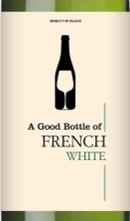 Jonathan was first on. Having, he said, been stuck inside for most of the year he could not conduct his usual field trips to find the most egregious ‘swill’ to inflict on us and had instead raided Waitrose for their cheapest wine – their ‘Good Bottle of French White’ at £5 a pop. His (for once) entirely truthful note trumped Michael’s attempt to position this as yet another of the Mondavi’s family’s impositions on the wine world. The family made its money in the Prohibition era by sending out ‘bricks’ of compressed grapes with the stern instruction that purchasers should on no account add hot water and yeast. Robert M’s transformation of a not-very-interesting Sauvignon into over-pried Fumé Blanc was just another example. But the audience (speaking generally) bought neither Michael’s story nor Richard’s attempt to place this as an everyday German quaffer (with a ‘perhaps a touch of Riesling bitterness on the finish’).
Jonathan was first on. Having, he said, been stuck inside for most of the year he could not conduct his usual field trips to find the most egregious ‘swill’ to inflict on us and had instead raided Waitrose for their cheapest wine – their ‘Good Bottle of French White’ at £5 a pop. His (for once) entirely truthful note trumped Michael’s attempt to position this as yet another of the Mondavi’s family’s impositions on the wine world. The family made its money in the Prohibition era by sending out ‘bricks’ of compressed grapes with the stern instruction that purchasers should on no account add hot water and yeast. Robert M’s transformation of a not-very-interesting Sauvignon into over-pried Fumé Blanc was just another example. But the audience (speaking generally) bought neither Michael’s story nor Richard’s attempt to place this as an everyday German quaffer (with a ‘perhaps a touch of Riesling bitterness on the finish’).
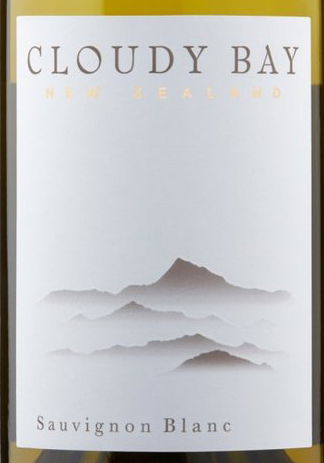 Wine no 2 was definitely a Sauvignon Blanc. All three agreed – but all had different origin stories. Michael’s fond memories of a trip to Bouchard Finlayson in the 1990s were trumped by Richard’s account of a explorations in Chile’s high passes. Jonathan was having none of this nonsense about the Atacama desert. No, he confidently asserted, we were drinking the world’s most famous SB – Cloudy Bay. The miracle was not just that LVMH can persuade us to pay £25 for this particular liquid but that they can produce somewhere around 100,000 cases a year at this quality. ‘Hmm…’ was the collective response. Definitely a trickier call than wine no 1. But those who took Jonathan at his word had the right of it – Cloudy Bay SB 2020 (£25).
Wine no 2 was definitely a Sauvignon Blanc. All three agreed – but all had different origin stories. Michael’s fond memories of a trip to Bouchard Finlayson in the 1990s were trumped by Richard’s account of a explorations in Chile’s high passes. Jonathan was having none of this nonsense about the Atacama desert. No, he confidently asserted, we were drinking the world’s most famous SB – Cloudy Bay. The miracle was not just that LVMH can persuade us to pay £25 for this particular liquid but that they can produce somewhere around 100,000 cases a year at this quality. ‘Hmm…’ was the collective response. Definitely a trickier call than wine no 1. But those who took Jonathan at his word had the right of it – Cloudy Bay SB 2020 (£25).
 The next wine did not have that many supporters. Neither Jonathan (a ’catastrophic’ example of ‘rosé gone wrong’) nor Michael (a ‘misguided’ attempt to sell Friulian natural wine at £30 a bottle to the ‘Cool Kids’ of Camberwell and Hackney) thought well of it – though Jonathan did accept that it was not ‘entirely necrotic’ and could go with a kebab if there was nothing else to hand. Richard was having none of this. He – for it as he – was proud to present us with a proper ‘Quevri’ wine from one of the most distinguished of Georgian wine-making families. Could we not taste the quince, did we not appreciate the complex oxidative notes, could we not appreciate the ‘sexy’ tannic finish derived from long skin contact? In fact most of us – if the scores are to be believed – did buy Richard’s story, though clearly not all actually liked the wine. Shame!
The next wine did not have that many supporters. Neither Jonathan (a ’catastrophic’ example of ‘rosé gone wrong’) nor Michael (a ‘misguided’ attempt to sell Friulian natural wine at £30 a bottle to the ‘Cool Kids’ of Camberwell and Hackney) thought well of it – though Jonathan did accept that it was not ‘entirely necrotic’ and could go with a kebab if there was nothing else to hand. Richard was having none of this. He – for it as he – was proud to present us with a proper ‘Quevri’ wine from one of the most distinguished of Georgian wine-making families. Could we not taste the quince, did we not appreciate the complex oxidative notes, could we not appreciate the ‘sexy’ tannic finish derived from long skin contact? In fact most of us – if the scores are to be believed – did buy Richard’s story, though clearly not all actually liked the wine. Shame!
Such were the arguments in the Breakout Rooms before we headed back for round 2 – the reds.
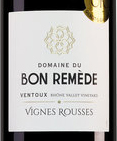 Jonathan presented us with a story of Swiss excellence and ingenuity that hadn’t quite come off. Not the wine itself; that was an excellent example of Alpine gluggability. But no one, he regretted to say, had any though for the ‘Anglosphere’ when they named their newest and most promising cross. The juiciness of Gamay, the hardiness and croppability of Reichensteiner. What could go wrong? Well, said Jonathan, what went wrong was the name. ‘Gamaret’ was perfectly decent – unless you were English… ‘Gamma Ray’ – the nuclear wine – was just not so appealing, however gluggable the wine…
Jonathan presented us with a story of Swiss excellence and ingenuity that hadn’t quite come off. Not the wine itself; that was an excellent example of Alpine gluggability. But no one, he regretted to say, had any though for the ‘Anglosphere’ when they named their newest and most promising cross. The juiciness of Gamay, the hardiness and croppability of Reichensteiner. What could go wrong? Well, said Jonathan, what went wrong was the name. ‘Gamaret’ was perfectly decent – unless you were English… ‘Gamma Ray’ – the nuclear wine – was just not so appealing, however gluggable the wine…
Michael had (of course) a rather different story. Here was a fine example of Nero d’Avola, lovingly sourced and bottled under his own label. Great natural acidity, distinctive mulberry nose. Balanced, beautiful and bloody good value. Richard begged to disagree. This was far too ‘rustic’ to be one of Michael’s. Surely his standards wouldn’t accept this as one of his own? No, here we had a blend of Grenache, Mourvedre and Syrah (which accounted for that ‘hint of road kill’ in the mouth) from the Cote de Ventoux. And it was Richard who had the right of it – though members’ votes suggested they were none so sure.
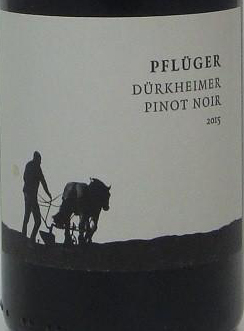 Wine no 5 was equally drinkable. Light in colour, a touch of fine red fruit on the nose (was it cherry?), even a hint of rose petals. It was the rose petals that bore out Jonathan’s story that this was a Constantia Nebbiolo – one in which he took an almost proprietorial interest after spotting it on a wine list at a ‘serious lunch’ during a trip out to South Africa. For Richard, it was the cherry notes that should guide us. A tribute to that remarkable wine-making family – the Allegrinis of Northern Italy no less. A ‘benchmark Valpolicella’ distinguished by its purity of fruit. No chance, he confidently asserted, that this could be a Pinot Noir as Michael had tried to persuade us. All his Palij-esque stories about Geisenheim and global warming and the virtues of German red were just a cover story designed to trick us. But it was a Pinot Noir, it was German and, at £15 from Alex Pfluger in the Pfalz it was an excellent deal for the money.
Wine no 5 was equally drinkable. Light in colour, a touch of fine red fruit on the nose (was it cherry?), even a hint of rose petals. It was the rose petals that bore out Jonathan’s story that this was a Constantia Nebbiolo – one in which he took an almost proprietorial interest after spotting it on a wine list at a ‘serious lunch’ during a trip out to South Africa. For Richard, it was the cherry notes that should guide us. A tribute to that remarkable wine-making family – the Allegrinis of Northern Italy no less. A ‘benchmark Valpolicella’ distinguished by its purity of fruit. No chance, he confidently asserted, that this could be a Pinot Noir as Michael had tried to persuade us. All his Palij-esque stories about Geisenheim and global warming and the virtues of German red were just a cover story designed to trick us. But it was a Pinot Noir, it was German and, at £15 from Alex Pfluger in the Pfalz it was an excellent deal for the money.
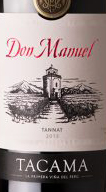 Last up was a real heavyweight. Richard was proud to present to us a with a touch of healthy resveratrolian reassurance. A Sardinian Cannonau (aka Grenache) but with the gusty charm and reductive hint of many Sardinian reds. Perhaps it could do with another couple of years to come together but well worth it from the off. Jonathan, too had gone for the Grenache. He’d picked out for us the 2015 vintage of ‘Niño Mimado’ (‘naughty boy’) from Bodegas Esteban Martin. This was Esteban’s flagship wine, just 6000 bottles a year of dark red fruit with notes of prune and leather. No, no, no! said Michael. Don’t believe these (convincing) lies. This was a wine that he was proud to have discovered and prouder still to stock. He’d discovered it in the far reaches of Peru (in the Ica valley somewhere near Lima at the base of Macchu Pichu). Tacama is the oldest wine estate in Latin America (founded in 1564) and this was the ‘wildly hedonistic’ Don Manuel Tannat – a snip at £30!
Last up was a real heavyweight. Richard was proud to present to us a with a touch of healthy resveratrolian reassurance. A Sardinian Cannonau (aka Grenache) but with the gusty charm and reductive hint of many Sardinian reds. Perhaps it could do with another couple of years to come together but well worth it from the off. Jonathan, too had gone for the Grenache. He’d picked out for us the 2015 vintage of ‘Niño Mimado’ (‘naughty boy’) from Bodegas Esteban Martin. This was Esteban’s flagship wine, just 6000 bottles a year of dark red fruit with notes of prune and leather. No, no, no! said Michael. Don’t believe these (convincing) lies. This was a wine that he was proud to have discovered and prouder still to stock. He’d discovered it in the far reaches of Peru (in the Ica valley somewhere near Lima at the base of Macchu Pichu). Tacama is the oldest wine estate in Latin America (founded in 1564) and this was the ‘wildly hedonistic’ Don Manuel Tannat – a snip at £30!
And, as the grand reveal (after we had all agonised for 15 minutes in our separate Breakout Rooms) proved it was Richard and Jonathan who’d been bluffing.
But it’s no bluff to say that this was (another) fabulous evening. Our thanks to all our Masters of Wine – yet again.
The wines:
- A Good Bottle of French White (£5)
- Cloudy Bay Sauvignon Blanc 2020 (£25)
- Quevri Bouquet Rkatsiteli 2016 Mildian Family Winery Georgia (£20)
- Domaine du Bon Remede Ventoux les Vignes Rousses 2017i (£12)
- Pfluger Pinot Noir (£15)
- Don Manuel Peruvian Tannat (£30)